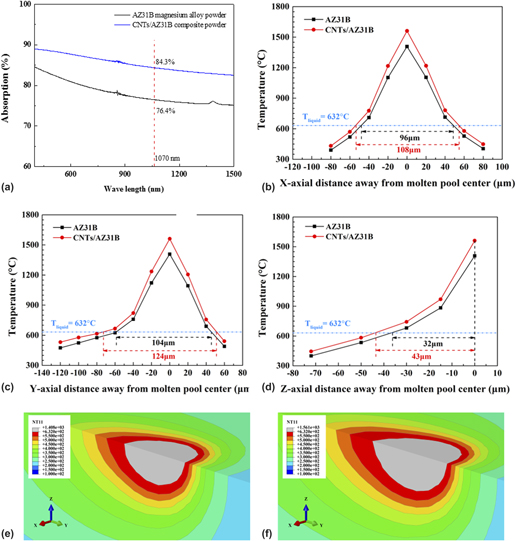Crossref Citations
This article has been cited by the following publications. This list is generated based on data provided by
Crossref.
Shen, Bingnan
Li, Hui
Liu, Sheng
Zou, Jing
Shen, Shengnan
Wang, Yinghe
Zhang, Tao
Zhang, Dongqi
Chen, Yinghua
and
Qi, Haiqin
2020.
Influence of laser post-processing on pore evolution of Ti–6Al–4V alloy by laser powder bed fusion.
Journal of Alloys and Compounds,
Vol. 818,
Issue. ,
p.
152845.
Zhang, Wan-neng
Wang, Lin-zhi
Feng, Zhong-xue
and
Chen, Yu-ming
2020.
Research progress on selective laser melting (SLM) of magnesium alloys: A review.
Optik,
Vol. 207,
Issue. ,
p.
163842.
Li, Yageng
Jahr, Holger
Zhou, Jie
and
Zadpoor, Amir Abbas
2020.
Additively manufactured biodegradable porous metals.
Acta Biomaterialia,
Vol. 115,
Issue. ,
p.
29.
Zhuang, Jie
Gu, Dongdong
Xi, Lixia
Lin, Kaijie
Fang, Yamei
and
Wang, Rui
2020.
Preparation method and underlying mechanism of MWCNTs/Ti6Al4V nanocomposite powder for selective laser melting additive manufacturing.
Powder Technology,
Vol. 368,
Issue. ,
p.
59.
Wan, Le
Shi, Shihong
Xia, Zhixin
Shi, Tuo
Zou, Yibo
Li, Kuan
and
Chen, Xiaming
2021.
Directed energy deposition of CNTs/AlSi10Mg nanocomposites: Powder preparation, temperature field, forming, and properties.
Optics & Laser Technology,
Vol. 139,
Issue. ,
p.
106984.
Li, Yageng
Shi, Jirong
Jahr, Holger
Zhou, Jie
Zadpoor, Amir A.
and
Wang, Luning
2021.
Improving the Mechanical Properties of Additively Manufactured Micro-Architected Biodegradable Metals.
JOM,
Vol. 73,
Issue. 12,
p.
4188.
Hu, Zijian
Zhao, Zhe
Deng, Xin
Lu, Zhongliang
Liu, Jianye
and
Qu, Zhi
2022.
Microstructure and mechanical behavior of TiCN reinforced AlSi10Mg composite fabricated by selective laser melting.
Materials Chemistry and Physics,
Vol. 283,
Issue. ,
p.
125996.
Zhang, Chenghang
Li, Zhuo
Zhang, Jikui
Tang, Haibo
and
Wang, Huaming
2023.
Additive manufacturing of magnesium matrix composites: Comprehensive review of recent progress and research perspectives.
Journal of Magnesium and Alloys,
Vol. 11,
Issue. 2,
p.
425.
Gu, Dongdong
2023.
Laser Additive Manufacturing of Metallic Materials and Components.
p.
71.
Pillari, Lava Kumar
Lessoway, Kyle
and
Bichler, Lukas
2023.
Carbon nanotube and graphene reinforced magnesium matrix composites: A state-of-the-art review.
Journal of Magnesium and Alloys,
Vol. 11,
Issue. 6,
p.
1825.
Li, Xinzhi
Fang, Xuewei
Wang, Shuaipeng
Wang, Siqing
Zha, Min
and
Huang, Ke
2023.
Selective laser melted AZ91D magnesium alloy with superior balance of strength and ductility.
Journal of Magnesium and Alloys,
Vol. 11,
Issue. 12,
p.
4644.
Su, Chenyu
Yang, Jingjing
Wei, Tongbo
Zhang, Yihui
Yang, Peihua
and
Zhou, Jianxin
2023.
Numerical simulation of the thermal behaviors for two typical damping alloys during selective laser melting.
Journal of Manufacturing Processes,
Vol. 101,
Issue. ,
p.
1419.
Devgan, Sandeep
Mahajan, Amit
and
Mahajan, Vinod
2024.
Additive Manufacturing of Bio-implants.
p.
33.



